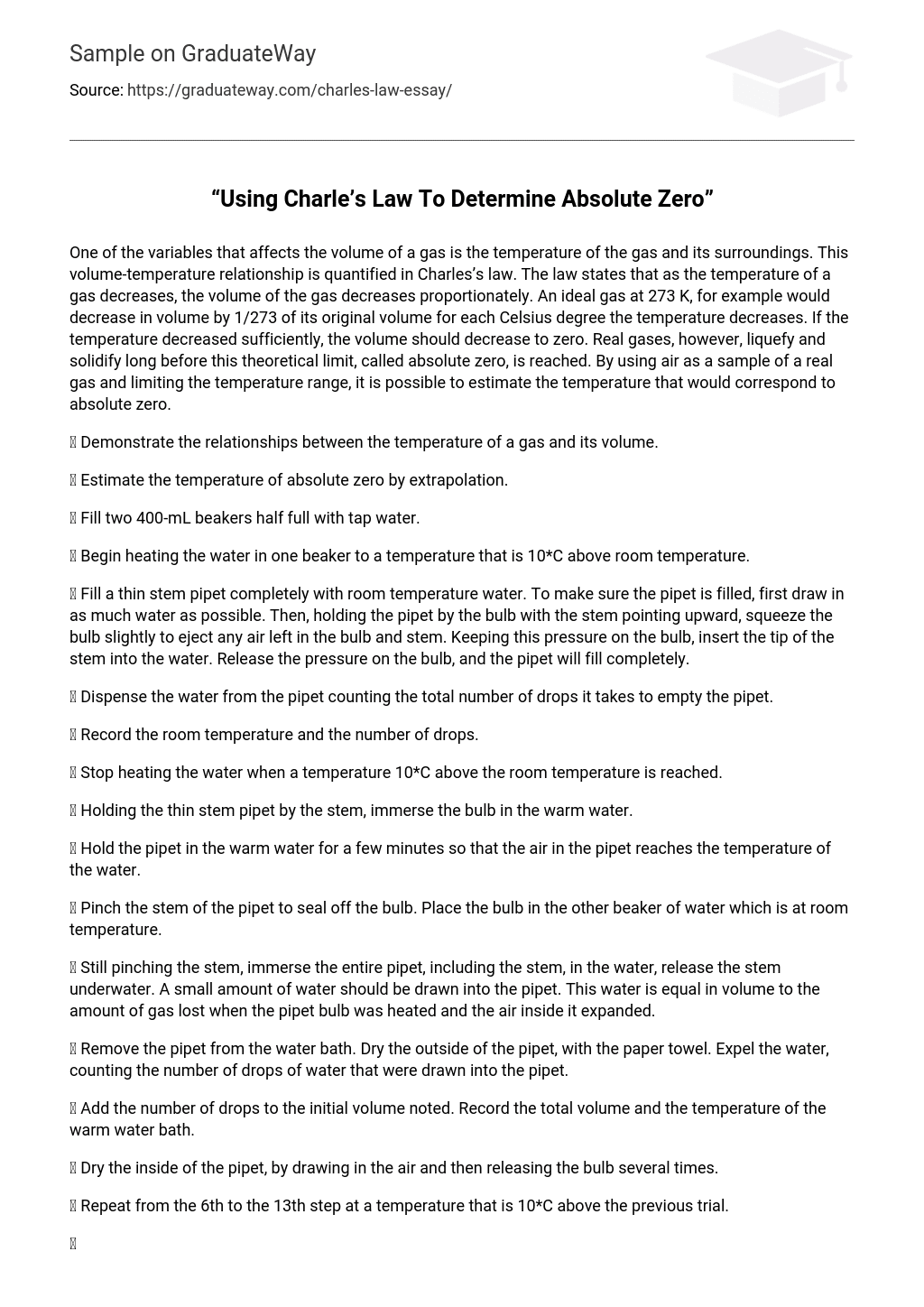Charles’s law explains the correlation between gas temperature and volume, taking into account the surrounding temperature. The law states that as the gas temperature decreases, its volume also decreases in proportion. For example, if an ideal gas is at 273 K, each Celsius degree decrease in temperature would cause its volume to decrease by 1/273 of its original volume.
If the temperature decreases enough, the volume should also decrease to zero. Nevertheless, real gases turn into liquids and solids well before reaching the theoretical limit known as absolute zero. By using air as a real gas sample and restricting the temperature range, it becomes possible to estimate the temperature that corresponds to absolute zero.
- Demonstrate the relationships between the temperature of a gas and its volume.
- Estimate the temperature of absolute zero by extrapolation.
- Fill two 400-mL beakers half full with tap water.
- Begin heating the water in one beaker to a temperature that is 10*C above room temperature.
- Fill a thin stem pipet completely with room temperature water. To make sure the pipet is filled, first draw in as much water as possible. Then, holding the pipet by the bulb with the stem pointing upward, squeeze the bulb slightly to eject any air left in the bulb and stem. Keeping this pressure on the bulb, insert the tip of the stem into the water. Release the pressure on the bulb, and the pipet will fill completely.
- Dispense the water from the pipet counting the total number of drops it takes to empty the pipet.
- Record the room temperature and the number of drops.
- Stop heating the water when a temperature 10*C above the room temperature is reached.
- Holding the thin stem pipet by the stem, immerse the bulb in the warm water.
- Hold the pipet in the warm water for a few minutes so that the air in the pipet reaches the temperature of the water.
- Pinch the stem of the pipet to seal off the bulb. Place the bulb in the other beaker of water which is at room temperature.
- Still pinching the stem, immerse the entire pipet, including the stem, in the water, release the stem underwater. A small amount of water should be drawn into the pipet. This water is equal in volume to the amount of gas lost when the pipet bulb was heated and the air inside it expanded.
- Remove the pipet from the water bath. Dry the outside of the pipet, with the paper towel. Expel the water, counting the number of drops of water that were drawn into the pipet.
- Add the number of drops to the initial volume noted. Record the total volume and the temperature of the warm water bath.
- Dry the inside of the pipet, by drawing in the air and then releasing the bulb several times.
- Repeat from the 6th to the 13th step at a temperature that is 10*C above the previous trial.
- Continue this procedure until the water temperature is approximately 75*C. Temperature (*C)Total Volume (Drops)
- Possible errors could occur while counting the drops, people can either lose count, or too many drops will be let out instead of single drops. To improve this patience and tolerance are a must, hurrying will only cause the person to re-start from the beginning.
- Errors could also occur while taking the temperature of the warm water, if the hot plate is turned off, the beaker will obviously cool down a few degrees and so this might affect the results. An idea to improve this would be setting the hot plate on a moderate heat so that the same heat temperature can be stable throughout the procedures.
- Errors could occur if the tip of the pipet is not pinched properly, this will result in the false number of drops getting drawn into it. To improve this one must make sure the whole tip is pinched and that there is no space for any air to enter or escape.
- Errors could occur if the number of minutes in which the bulb is immersed in the warm water is different. This might have a few effects on the results and number of drops. To improve this either make sure you set a stop watch or give each procedure the same exact time to immerse the bulb.





